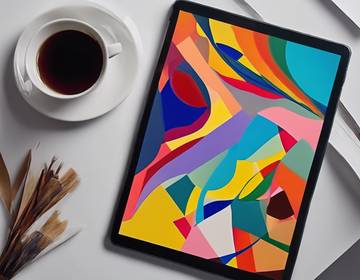
Artificial Intelligence and Art: Merging Human Creativity with Machine Learning in 2025
0 KommentareThe AI Revolution in Art: A New Era of Creativity
Imagine stepping into an art gallery where paintings shift dynamically, sculptures evolve over time and digital canvases respond to your emotions. This isn’t science fiction - it’s the rapidly emerging reality of AI-driven art in 2025. As artificial intelligence continues to evolve, it is reshaping how art is created, experienced and even valued. No longer just a tool for automation, AI is now a co-creator, pushing the boundaries of human imagination.
The Rise of AI-Generated Art
AI-driven creativity is no longer a novelty; it has become a mainstream artistic movement. Machine learning algorithms, neural networks, and deep learning technologies are empowering artists to explore uncharted territories. From generating intricate digital paintings to composing symphonies and even crafting poetry, AI is proving to be an invaluable partner in the creative process. Notable artists like Refik Anadol and Mario Klingemann have already made waves in the art world with AI-assisted works that challenge traditional notions of authorship and originality.
But AI isn’t just replicating human creativity - it’s enhancing it. Artists can train AI models with their unique styles, allowing them to create artwork at an unprecedented scale and speed. Tools like generative adversarial networks (GANs) are enabling the creation of pieces that feel both deeply personal and refreshingly innovative.
Democratizing Creativity and Redefining Ownership
One of the most exciting aspects of AI in art is its potential to democratize creativity. With AI-powered design tools becoming more accessible, anyone - from seasoned professionals to complete novices - can create stunning artwork with just a few clicks. This shift is blurring the lines between traditional artists and digital creators, opening new doors for creative expression.
At the same time, the rise of AI-generated art is sparking new debates around ownership and value. Who owns an artwork created by an algorithm? Is the human guiding the AI the true artist, or does the AI itself deserve recognition? As AI-generated pieces continue to sell for significant sums at major auctions, these questions are becoming more pressing than ever.
The Future of AI and Art in 2025 and Beyond
Looking ahead, AI’s role in the art world will only expand. With advancements in generative AI, we could see fully immersive virtual art experiences, real-time interactive pieces that respond to viewers, and even AI-powered curators selecting works tailored to individual tastes. As artists and technologists collaborate more closely, the definition of what constitutes “art” will continue to evolve.
Yet, at its core, art remains a deeply human endeavor. AI may assist, inspire and even create, but it is human creativity, emotion, and storytelling that breathe life into art. The future of art isn’t about replacing artists with machines - it’s about unlocking new realms of imagination that were once beyond reach.
So, in this AI-driven renaissance, one question remains: How will you choose to express yourself in the age of machine creativity?

Kommentare